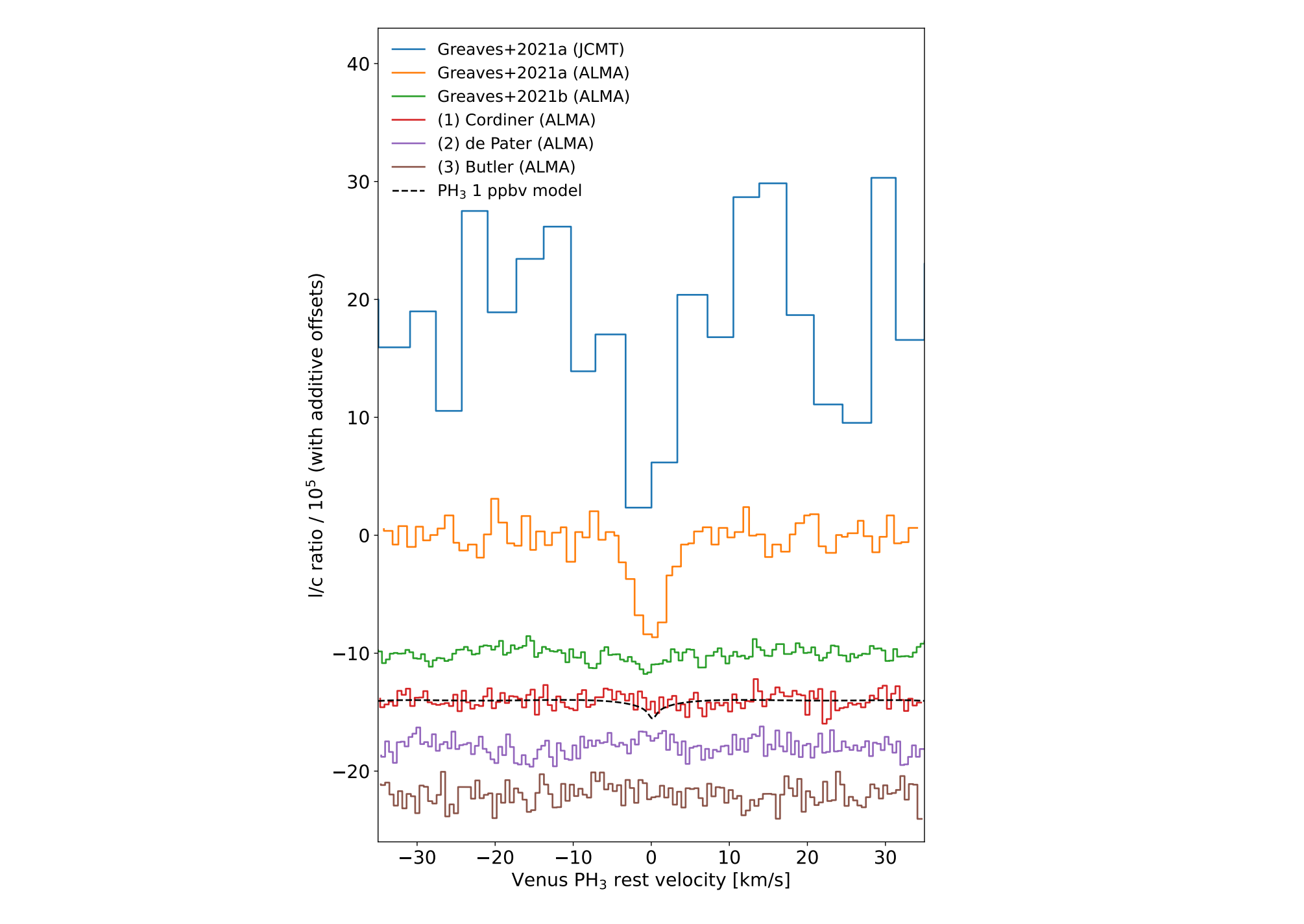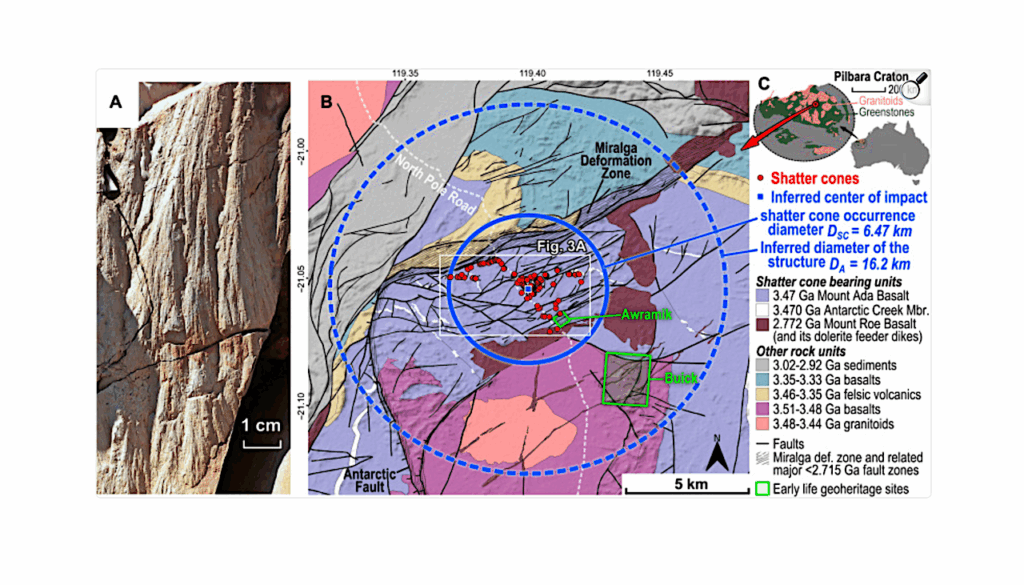Phosphine In The Venusian Atmosphere: A Strict Upper Limit From SOFIA GREAT Observations

The presence of phosphine (PH3) in the atmosphere of Venus was reported by Greaves et al. (2021a), based on observations of the J=1-0 transition at 267 GHz using ground-based, millimeter-wave spectroscopy.
This unexpected discovery presents a challenge for our understanding of Venus’s atmosphere, and has led to a reappraisal of the possible sources and sinks of atmospheric phosphorous-bearing gases. Here we present results from a search for PH3 on Venus using the GREAT instrument aboard the SOFIA aircraft, over three flights conducted in November 2021.
Multiple PH3 transitions were targeted at frequencies centered on 533 GHz and 1067 GHz, but no evidence for atmospheric PH3 was detected. Through radiative transfer modeling, we derived a disk-averaged upper limit on the PH3 abundance of 0.8 ppb in the altitude range 75-110 km, which is more stringent than previous ground-based studies.
M. A. Cordiner, G. L. Villanueva, H. Wiesemeyer, S. N. Milam, I. de Pater, A. Moullet, R. Aladro, C. A. Nixon, A. E. Thelen, S. B. Charnley, J. Stutzki, V. Kofman, S. Faggi, G. Liuzzi, R. Cosentino, B. A. McGuire
Comments: Accepted for publication in Geophysical Research Letters
Subjects: Earth and Planetary Astrophysics (astro-ph.EP)
Cite as: arXiv:2210.13519 [astro-ph.EP] (or arXiv:2210.13519v1 [astro-ph.EP] for this version)
Submission history
From: Martin Cordiner PhD
[v1] Mon, 24 Oct 2022 18:18:51 UTC (1,492 KB)
https://arxiv.org/abs/2210.13519
Astrobiology,








